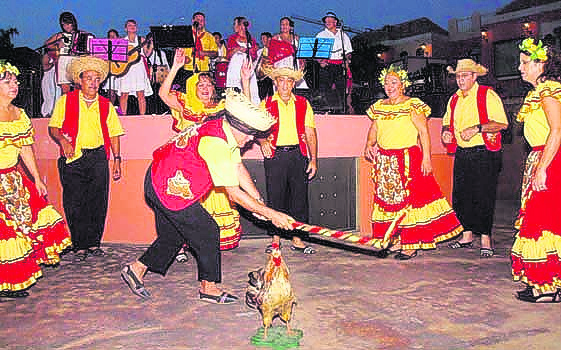(Oranjestad)—The Aruban culture has seen many substantial developments over the course of a century. With the introduction of the Lago Refinery at the turn of the 20th century, followed by the breakout of the Second World War and the general incentive for political independence during the mid-century, a cultural identity on the island began to take form and have since developed through international and local influences.
In the pre-industrial era of the 19th century, much could not be said about a cultural identity on the island. Still being a part of a Dutch colonial territory at the same, as well as not having political or economic autonomy (Curacao was the center of commerce, cultural life, and political management of the Netherland Antilles at the time), the small population of Aruba consisted mostly of farmers and fishermen, tending to their crops and their cattle, or going out to fish to provide for their family. As Quito Nicolaas states in his article Historia di Literatura Arubiano: E Bida Cultural (Literary History of Aruba: Cultural Life), “during the pre-industrial period, there were no significant economic activity that could have created a cultural ambience, with only one way to generate profit at the time for the sub existence of Aruban families.”
It wasn’t until the introduction of the Lago Refinery in San Nicolas in 1928, that the island saw a small boom in cultural manifestations and entertainment, as farmers left the ‘cunucu’ (country) life to work in the refinery, which resulted in Aruba acquiring a different economic pilar. Before this, entertainment and cultural manifestations were mostly experiences by local parishes and the island’s elite, who often partook in cultural and entertaining activities around the island, like going to the movie theater or coming together to share poetry on Sundays after church.
Literary life
Throughout the 19th century and up until the 1940s, there were also not much trace of a cultural climate for the cultural-literary sector on the island. Primary education was introduced on the island mid-19th century, followed by secondary and higher education around the late 30’s and 40’s. It wasn’t until the 1950s, with the introduction of the E.R.N.A agreement in 1951 and the signing of the Statute in 1954, which allowed more space for and control over the economic and cultural development of Aruba, that the literary life on the island began to grow substantially compared to decades before. This was in response to local institutions established in the 1940s for cultural and literary growth on the island, but that did not yet capture the attention of the general public. The 1950 brought with it a boom of literary production on the island, like those of V.S. Piternella, as well as migrant authors José Ramón Vicioso y Rings William Rufus, who have also contributed to the literary development on the island. The literary movement was further promoted by local broadcasters Voz di Aruba and Radio Kelkboom, with their regular broadcast of literary works.
The 50s and 60s also saw the influence of international cultures, especially that of the United States. During this time, because of international influences as well as the continued prosperity of the oil refinery, cultural traditions in Aruba began to really take form and become widespread, as different worldly and local concepts were introduced in the Aruban society. With the establishment of local television broadcast station Tele-Aruba in 1963, and with time and possibilities, local programs such as “Nos Tera”’ (“Our Land”) started to pay more attention to the Aruban culture and worked to form a cultural consciousness in the community. The 1960s also saw the rise of local authors and artists, who were more comfortable in producing works in our native tongue, Papiamento, but who also produced works in Spanish, English and Dutch This new phenomenon was in response to the interaction between economic growth, individual prosperity, cultural life and literary expression.
The 21st century
Nowadays, international influence on our culture is still prevalent, especially those from Latin America, the United States and The Netherlands. Nevertheless, there also exists a strong cultural identity and traditions that are exclusive to the Aruban culture, often manifesting during traditional celebrations, like Dia di San Juan/Dera Gai (St. John’s Day), Dia di Himno y Bandera (National Hymn and Flag Day), Camping during Easter and much more. With the surge of social media in the last decade, artistic voices, especially those of the younger generation, has become even more prevalent and easily accessible to the community of Aruba through online platforms such as Facebook, Instagram and TikTok.
Source: Historia di Literatura Arubiano: E Bida Cultural by J.R. “Quito” Nicolaas

















